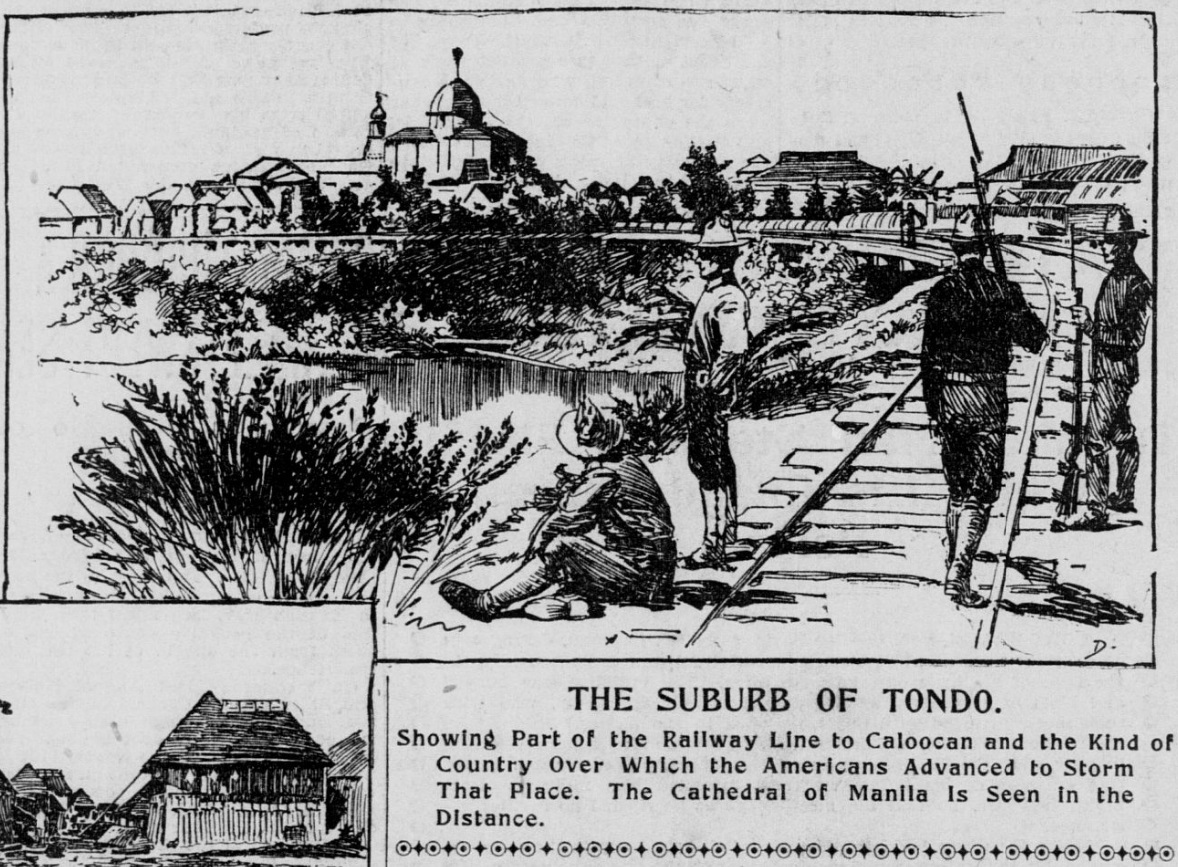
The Kind of Country Over Which the Americans Advanced to Storm Caloocan
(San Francisco Call, February 11 1899)

From this position, the advance was made on Caloocan, February 10, 1899
(Our Boys in the Philippines)

From Blockhouse No. 1 (right of red arrow), the advance was made on Caloocan, February 10, 1899 (left of red arrow)
This blockhouse was captured by the Americans on February 5, 1899
(Map provided by Historic San Mateo, from the Spanish Archives)
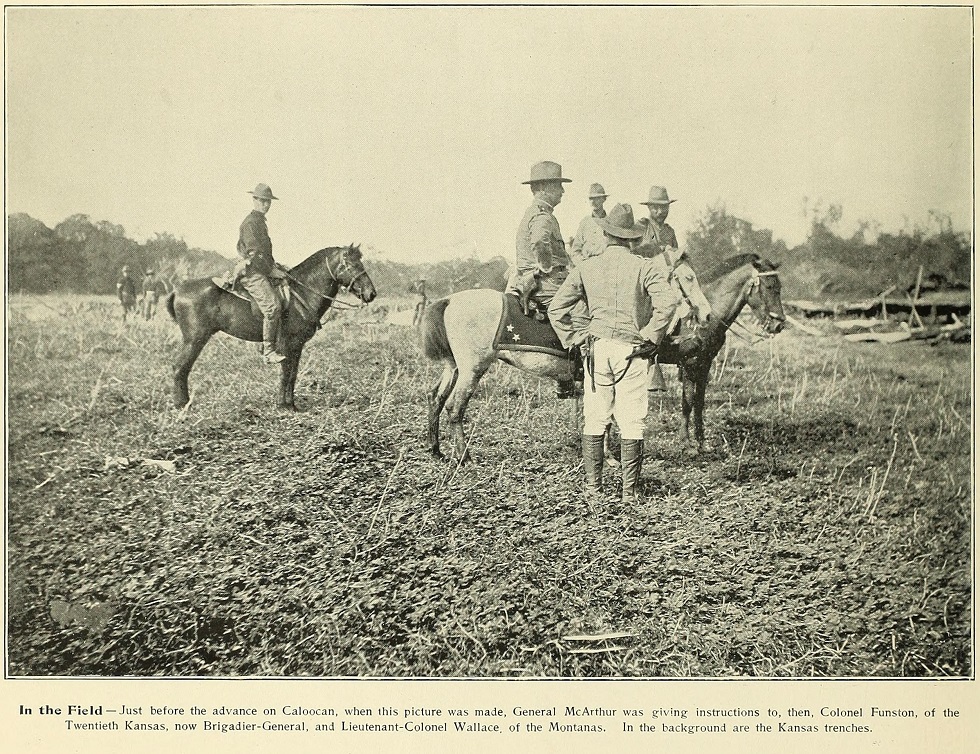
In the Field - Just before the advance on Caloocan, when this picture was made, General McArthur was giving instructions to, then, Colonel Funston, of the Twentieth Kansas, now Brigadier-General, and Lieutenant-Colonel Wallace of the Montanas. In the background are the Kansas trenches.
(Our Boys in the Philippines)
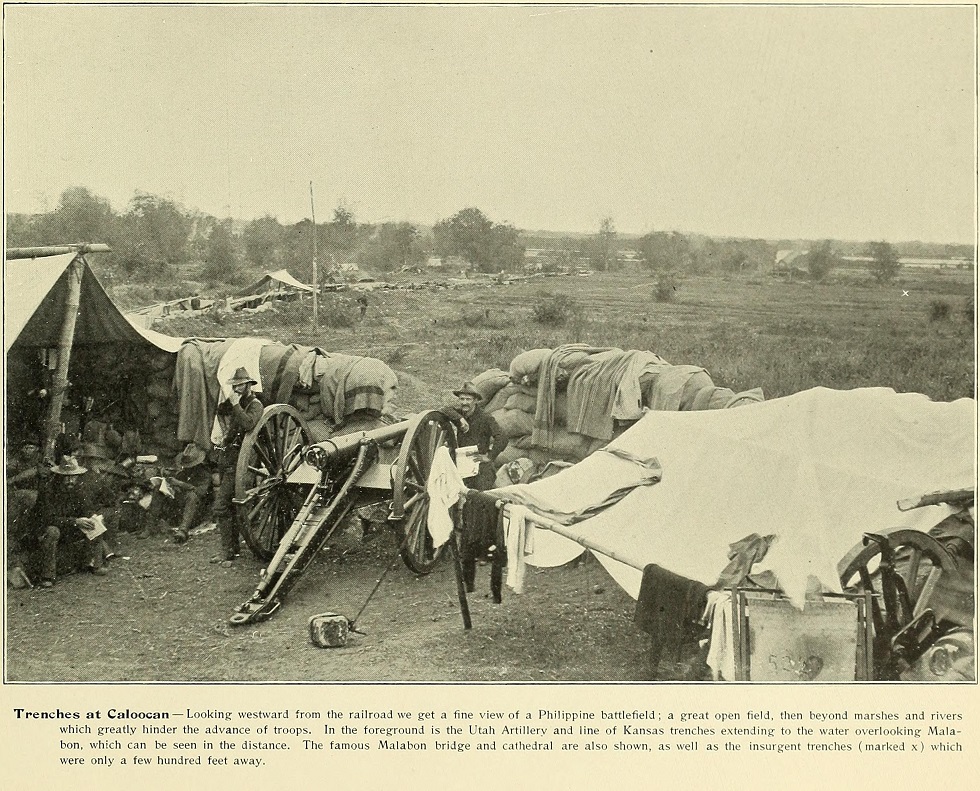
Trenches at Caloocan - Looking westward from the railroad we get a fine view of a Philippine battlefield; a great open field, then beyond marshes and rivers which greatly hinder the advance of troops. In the foreground is the Utah Artillery and line of Kansas trenches extending to the water overlooking Malabon, which can be seen in the distance. The famous Malabon bridge and cathedral are also shown, as well as the insurgent trenches (marked x) which were only a few hundred feet away.
(Our Boys in the Philippines)

The Montana Regiment Waiting the Order to Advance on Caloocan
(Harper's Pictorial History)

The Montana Regiment Advance on Caloocan
(Souvenir of the Eight Army Corps, Philippine Expeditions)
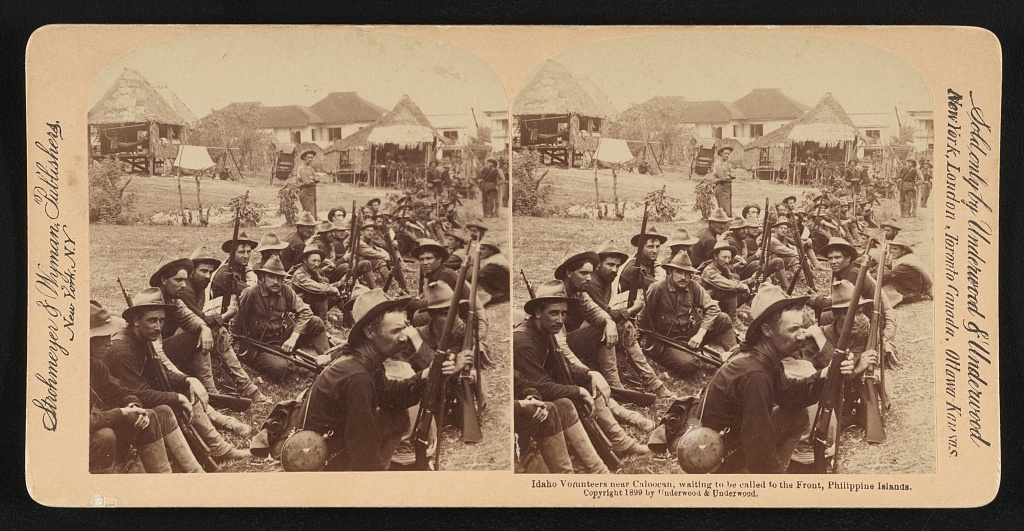
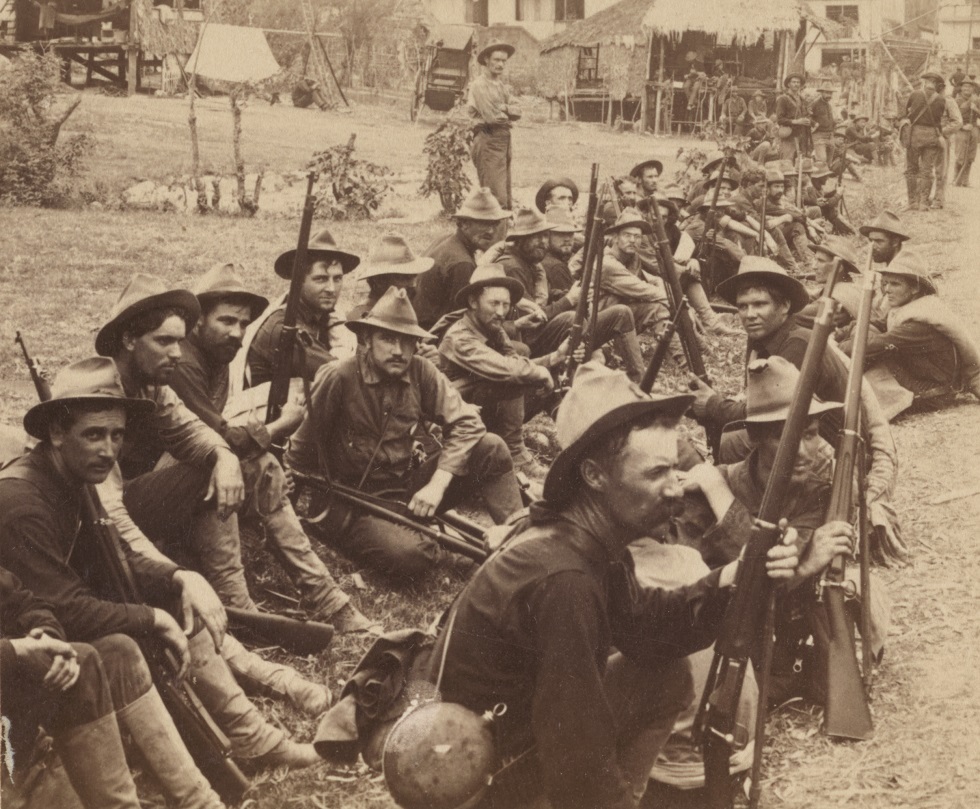
Idaho volunteers near Caloocan, waiting to be called to the Front
(U.S. Library of Congress)
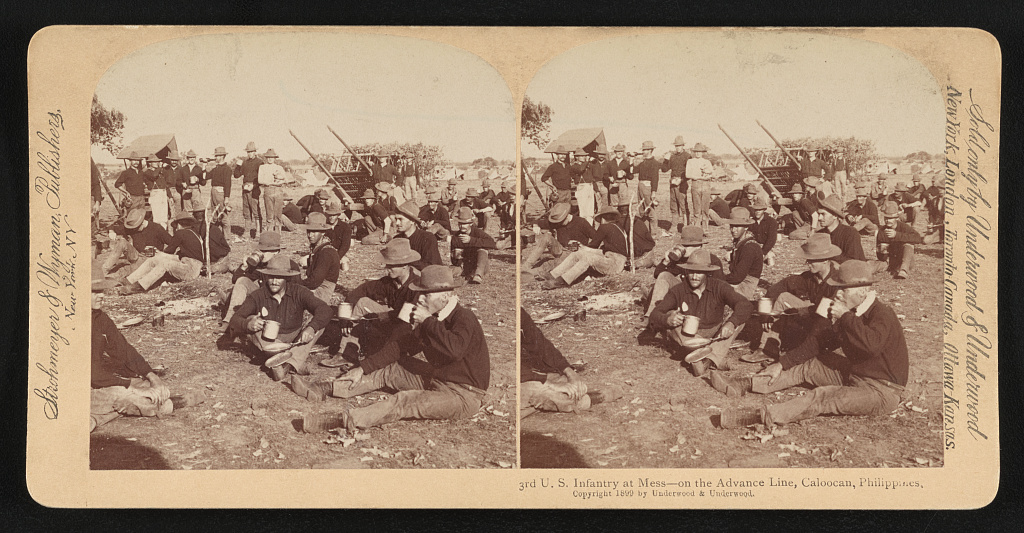
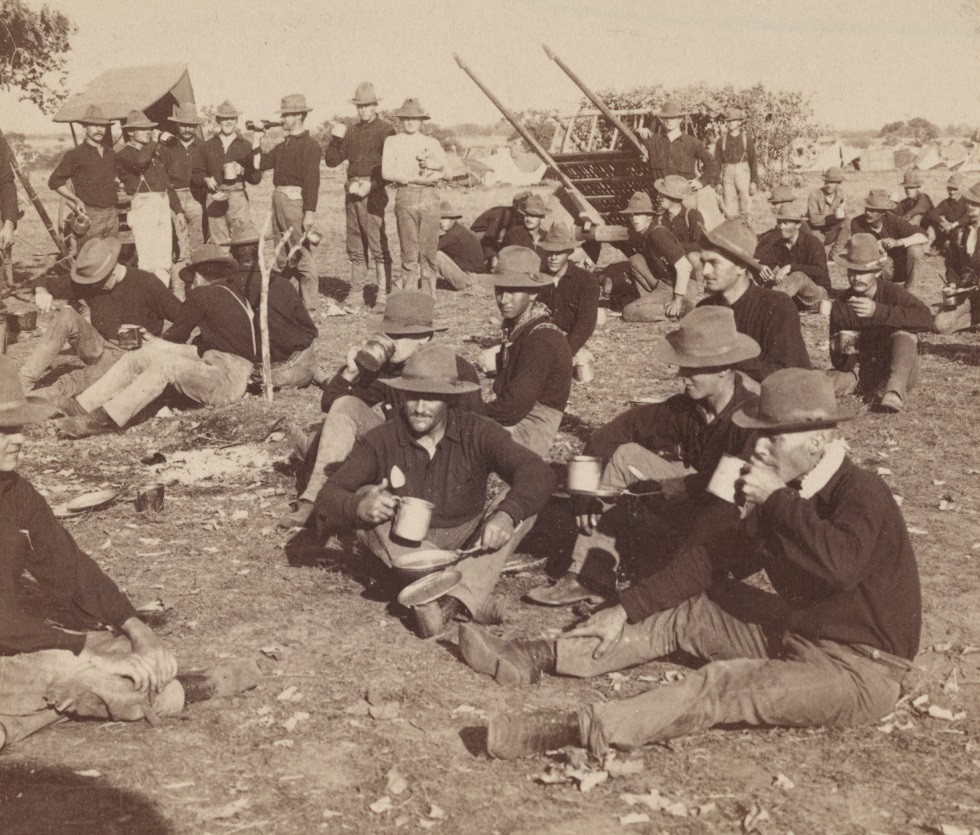
3rd U.S. Infantry at mess - on the advance line, Caloocan
(Must be the 3rd Artillery instead, who were acting as infantry in this battle)
(The 3rd U.S. Inf would sail from NY to Manila via Suez Canal February 3 to March 22 1899
and hadn't arrived yet at this time)
(U.S. Library of Congress)
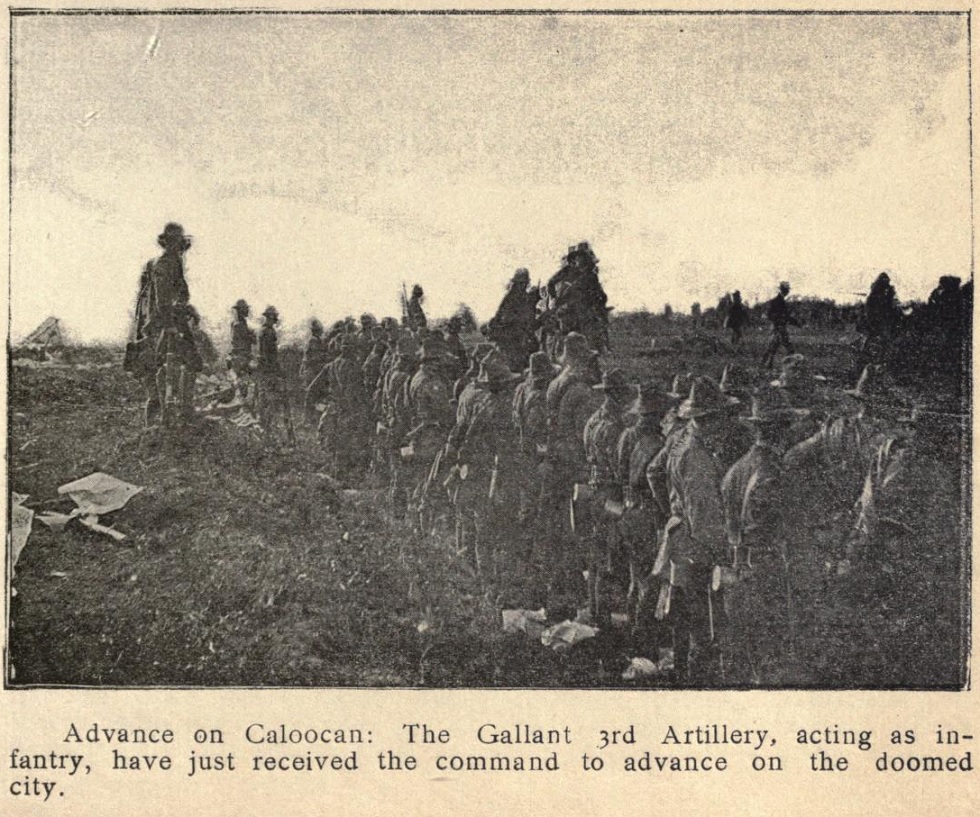
The 3rd Artillery, acting as infantry, receives command to Advance on Caloocan
(Souvenir of the Eight Army Corps, Philippine Expeditions)

The Advance on Caloocan - On the Firing Line of the Kansas Volunteers
(Harper's Pictorial History)
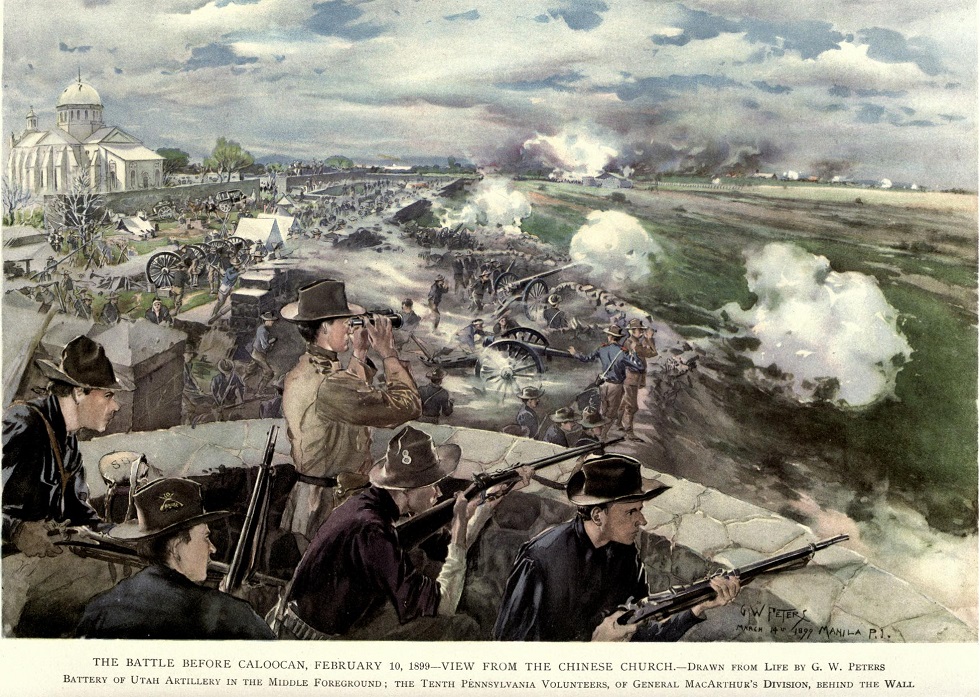
The Battle of Caloocan, February 10, 1899 - View from the Chinese Church
(Harper's Pictorial History)

Utah National Guard artillery firing on Caloocan

Utah Battery in action at Caloocan. The gunners have ceased firing to note the effect of a shot.

Interior of Caloocan church after bombardment
(U.S. Library of Congress)

Filipino Soldiers captured at Caloocan
(Utah Historical Society)

The Road to Caloocan after the Americans had passed through
(Harper's Pictorial History)

The Road to Caloocan after the Americans had passed through
(Harper's Pictorial History)
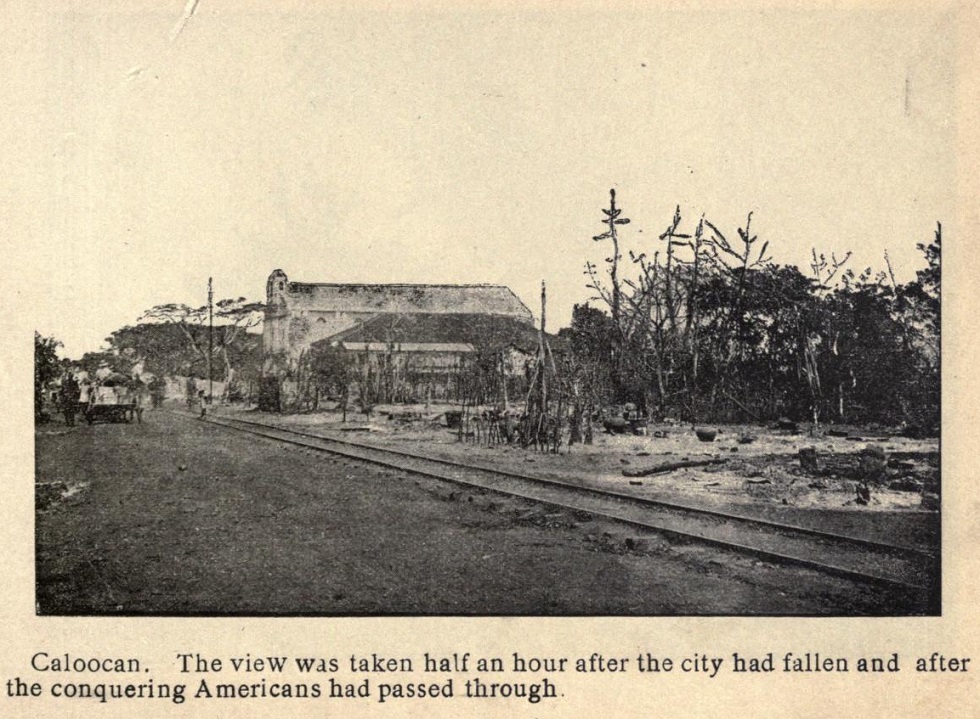
Caloocan after the Americans had passed through
taken half an hour after the city had fallen
(Souvenir of the Eight Army Corps, Philippine Expeditions)

The Ammunition-Train and Reserves of the Twentieth Kansas Volunteers, Colonel Frederick Funston,
marching through Caloocan at night after the Battle of February 10.
(Harper's Pictorial History)
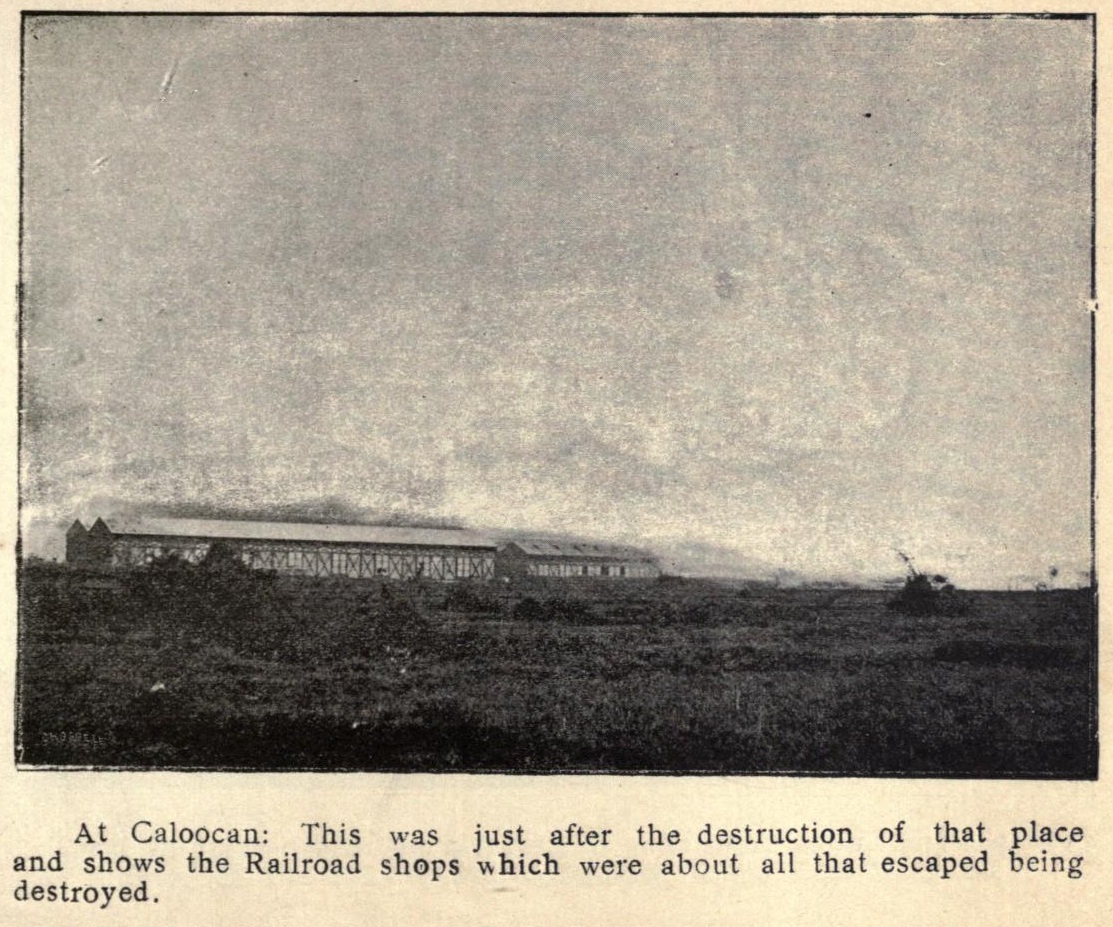
Caloocan after the destruction of that place
the Railroad shops were about all that escaped being destroyed
(Souvenir of the Eight Army Corps, Philippine Expeditions)
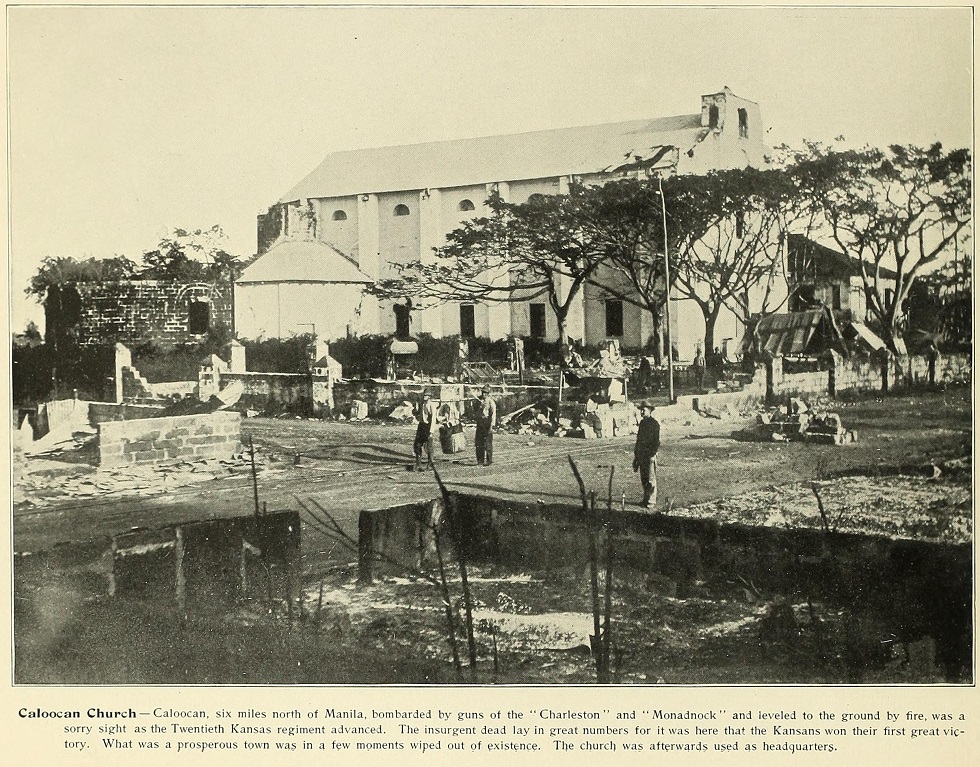
Caloocan Church - Caloocan, six miles north of Manila, bombarded by guns of the "Charleston" and "Monadnock" and leveled to the ground by fire, was a sorry sight as the Twentieth Kansas regiment advanced. The insurgent dead lay in great numbers for it was here that the Kansans won their great victory. What was a prosperous town was in a few moments wiped out of existence. The church was afterwards used as headquarters.
(Our Boys in the Philippines)

Unexploded shell fired from Manila Bay by the U.S.S. Monadnock, somewhere near Manila, Philippines
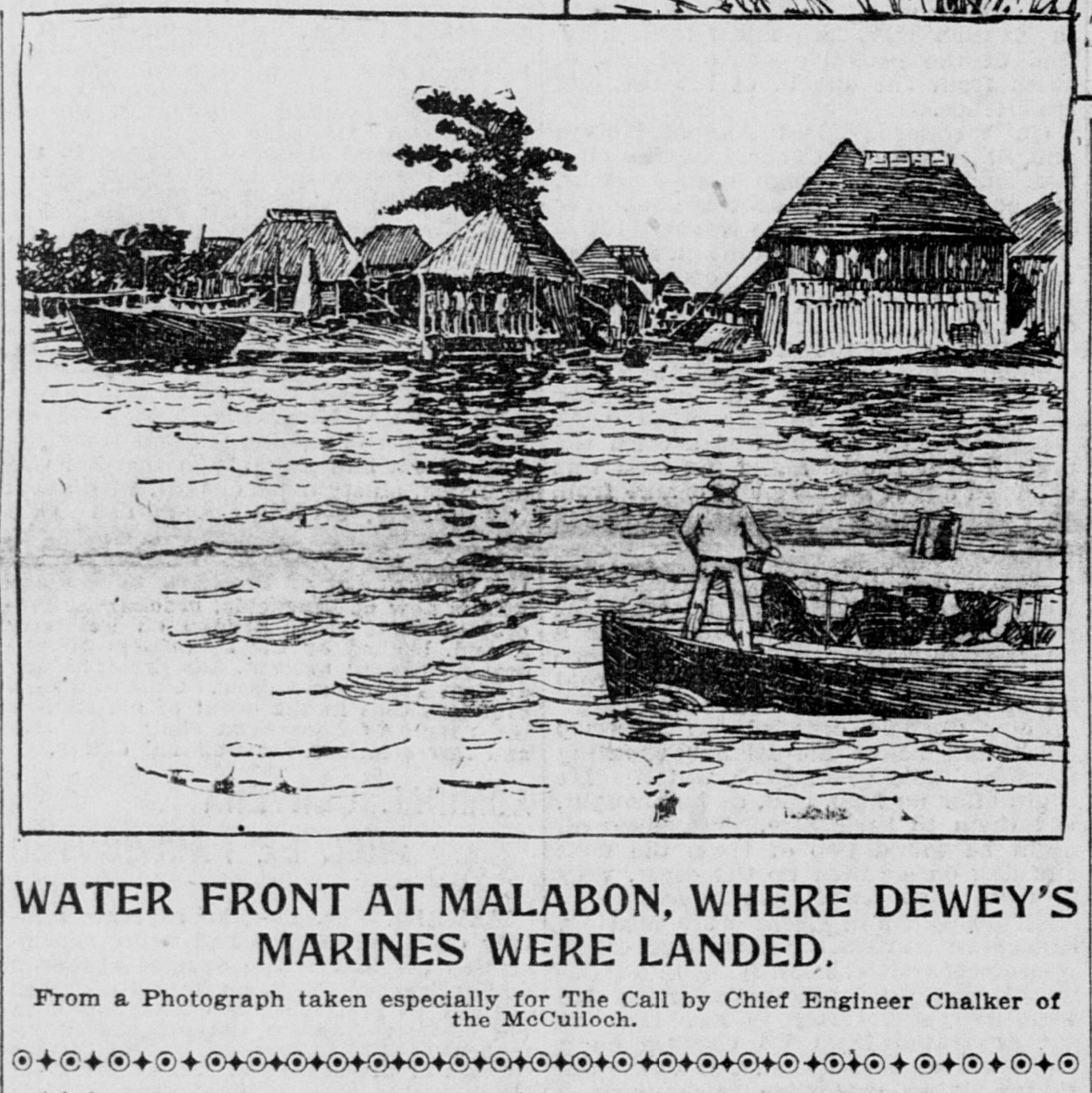
Where Dewey's Marines were Landed
(San Francisco Call, February 11 1899)
